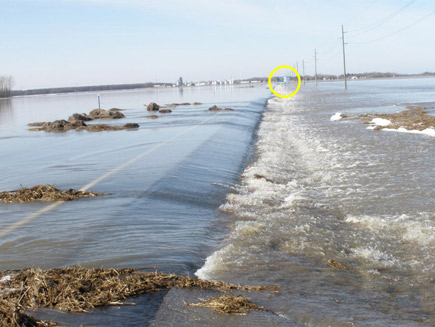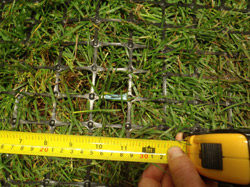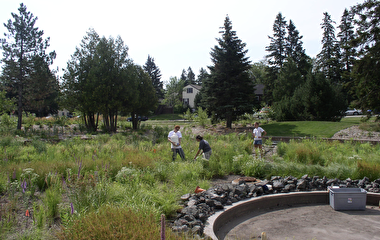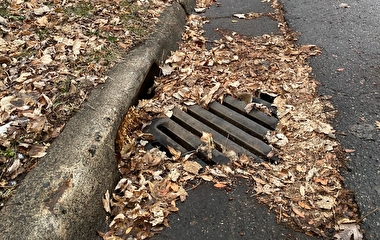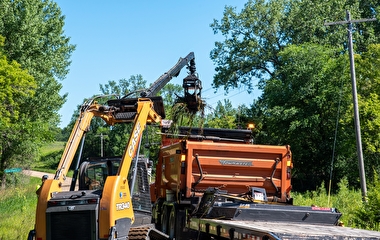road sign.
Roadway overtopping—when floodwaters flow unimpeded across roads—can be dangerous and costly. In a recent project, U of M researchers studied erosion, flow, and shear stress to find new ways to protect roadways from this major safety concern.
“This project was a combination of basic and applied science, and is a great example of the University and MnDOT working together successfully to solve problems unique to our geography and climate,” says Jeff Marr, associate director of engineering and facilities with the U’s St. Anthony Falls Laboratory (SAFL). The project was funded by the Minnesota Local Road Research Board and the Minnesota Department of Transportation (MnDOT).
SAFL researchers focused their analysis on the Red River watershed in northwestern Minnesota; roads in the area are prone to flooding and overtopping. Downstream scour and erosion of roadway embankments can result in breach or washout of the entire roadway. “Frequent flood events in recent years reinforce the need to protect roadways where flooding is likely to occur,” Marr says.
Raising the roadway to prevent overtopping is not a feasible solution, he explains, as flood plain law does not allow moving the problem elsewhere by backing up the water. The most cost-effective option is to allow floodwaters to overtop roadways and to try to protect their embankments from scour. Developing cost-effective scour-prevention measures could greatly reduce the cost of repairs, as well as the time required to reopen the roadway after a flood event.
The goal of this project was to investigate the effectiveness of slope protection techniques to shield overtopped roadways and their downstream embankments from scour and erosion. A further goal was to use cost-effective methods that could be installed by local agencies instead of contractors, Marr says.
For the study, the research team developed a field-based program to collect data on the hydraulics associated with full-scale overtopping events. Researchers recorded flood stage at several locations near the Red River during overtopping events and evaluated the failure modes under natural conditions. Annual field monitoring occurred from 2013 through 2016.
Next, the research team conducted a series of experiments at SAFL to study the hydraulic and erosional processes associated with overtopping. With bare soil used as a control, three erosion protection techniques were investigated: geogrid over existing vegetation (armored sod), turf reinforcement mat, and flexible concrete geogrid mat. All three encourage vegetation to grow through a mat, helping to stabilize the soil and protect the embankment from scour and erosion.
The researchers were able to draw some conclusions from the laboratory experiments, including:
- Bare soil with no vegetative cover (the control) is highly susceptible to erosion and is the worst-case scenario. New installations should have established vegetation before the first overtopping event is expected.
- All three mitigation techniques reduced erosion, but the flexible concrete geogrid mat provided the best protection.
“This project developed a fairly complete matrix of useful erosion-protection measures that our own staff can implement—techniques that are less elaborate and more cost-effective than hiring contractors,” says J.T. Anderson, assistant district engineer with MnDOT District 2.
